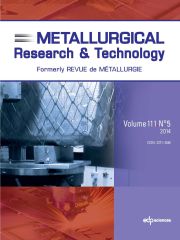Article contents
The “CO2 Tool”: CO2 emissions & energy consumptionof existing & breakthrough steelmaking routes
Published online by Cambridge University Press: 29 September 2009
Abstract
An important task in the structure of the ULCOS program hasbeen to provide a fair and homogeneous comparison amongthe elements of the initial and the short lists of processes,which are candidates to become the ultimate ULCOS,carbon-lean breakthrough steel production processes of thefuture. Eventually, that information is being used to providethe rationale for moving forward in the selection of the futurebest technologies. The CO2 tool, developed within SP9, thesubproject devoted to measuring the sustainability of theproposed ULCOS processes, is one of the key tools workedout but also used to carry out this essential part of the ULCOSprogram. The CO2 tool is a mass and energy balance model of acomplete steel mill, i.e. a steel mill simulator, which focuseson estimating energy consumption and GHG emissions of ahot mill site. It applies a standard analysis to all the processroutes proposed in the course of the ULCOS program, bynormalizing the size of the site (4 Mt/y), the nature of theraw materials it uses, the scrap input in the steel shop and anumber of other parameters. The tool is fed by process dataof the various plants lined up in the steel mil, which havebeen generated by more detailed models and also arisefrom experimental data, when they are available. The tool ismeant to feed a further tool that compares the production andAbstracts of technical articlesinvestment costs in various scenarios extending until 2050,with a series of mild to strong carbon constraints. The structure of the tool as well as the results it brought aboutare presented here. The major conclusion is that severalsolutions offer the possibility to cut steel mill emission bymore than 50% compared to the baseline “best technology”steel mill, provided that breakthrough solutions are taken intoaccount, based on the uncoupling of energy savings andCO2 mitigation targets.
- Type
- Research Article
- Information
- Metallurgical Research & Technology , Volume 106 , Issue 9: Selected papers from 4th ULCOS SEMINAR (Part 1) , September 2009 , pp. 325 - 336
- Copyright
- © La Revue de Métallurgie, 2009
- 29
- Cited by


